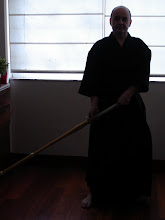God (Kami)
When the English word God is translated into Japanese, it is generally represented by the kanji (Chinese character) 神 and pronounced kami. However, to avoid misunderstanding, it would be better to think of God, 神, and kami as three separate concepts.
“God” is the supreme being of monotheism and is customarily capitalized to indicate the unique nature of the deity and draw a distinction with the multiple gods of polytheism.
The written Japanese form, 神, is influenced by the Chinese meaning of the character. Common words in both languages using this character, such as 精神 (pronounced seishin in Japanese), meaning “spirit” or “mind,” and 神経 (shinkei), meaning “nerves,” are related to human mental qualities. Pronounced shen in Chinese, the character 神 carries some divine attributes, but they are of a decidedly low rank and far below those of the highest power in Chinese theology, termed 天 (tian) or 上帝 (shangdi) in Chinese.
Japan’s kami were traditionally thought of as anthropomorphized natural phenomena. They included the kami that appear in the Kojiki (Record of Ancient Matters) and the Nihon shoki (Chronicle of Japan), Japan’s ancient records of myth and history, kami that were worshiped in shrines, and everything possessing extraordinary qualities, including the sun, the moon, the wind, the rain, the sea, large rocks and trees, and even some smaller plants, animals, and people. This is how they were defined by the eighteenth-century scholar of Japanese classics Motoori Norinaga. According to Motoori, anything that inspired awe and sensitivity to ephemeral beauty (aware) was a kami.
For Japanese people who believe this, their country is a rich natural landscape with kami to be found wherever they turn—in short a kami no kuni or “country of kami.” If this phrase is translated into English as “God’s country,” it can be misunderstood as a fanatically nationalistic expression, but this is not what the phrase actually means.
Difficulty of Precise Definition
Following the end of World War II, the Allied Occupation authorities disestablished Shintō as a state religion, and Yasukuni Shrine became a private religious corporation. But the idea of “glorious spirits” and the idea that people become kami after death remained among Japanese people.
Given this confused and contradiction-ridden history, I am afraid that Japanese people themselves are not fully conscious of what they believe about kami and would not be able to explain their beliefs to a third party. Successive developments have increased the complexity of defining these beliefs to the point where it is impossible to do so precisely.
 Memorial de Chaing Kai Shek visto desde la 10 planta del edificio de la reunión.
Memorial de Chaing Kai Shek visto desde la 10 planta del edificio de la reunión. 






 La famosa torre 101. El 2º edificio más alto del mundo
La famosa torre 101. El 2º edificio más alto del mundo

 Imágenes del Museo Histórico.
Imágenes del Museo Histórico.
